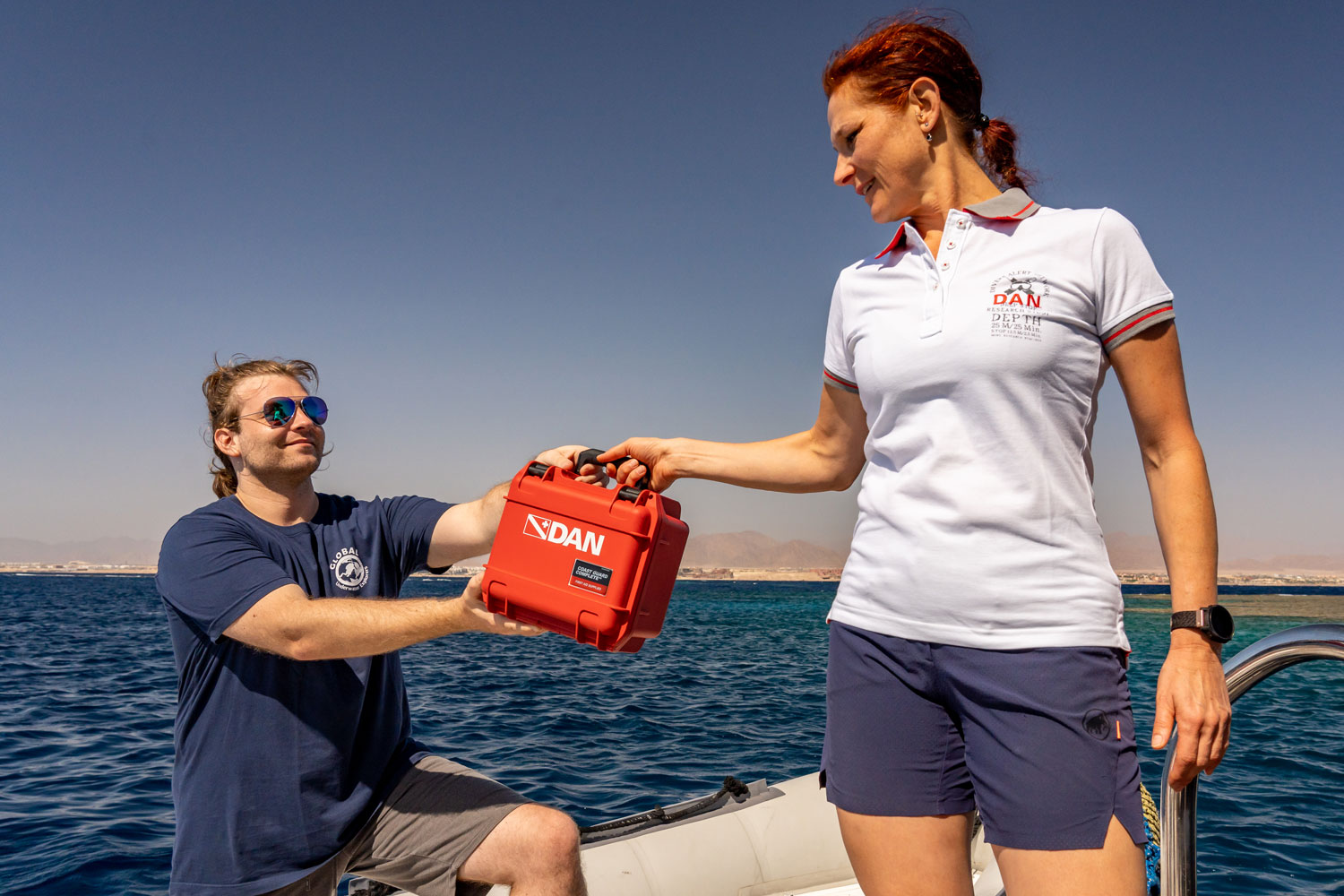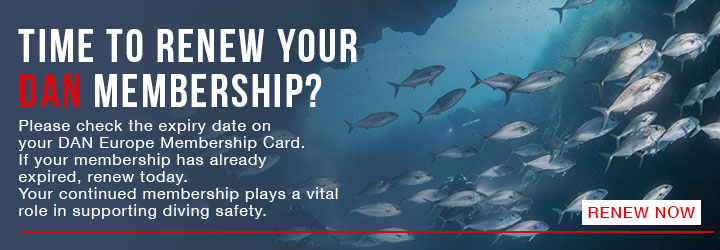Features
A First-Aid Kit Fit for Diving
Be it a jellyfish sting or a dropped tank, any injury in or on the water can be dangerous or even life-threatening without a first-aid kit. You should have one within easy reach every time you dive. And just like your dive gear, your first-aid kit needs care and maintenance to remain useful and up to date. When complete and stocked with the right components for diving-specific situations, a first-aid kit can help make annoyances vanish and incidents manageable.
A basic first-aid kit for diving is comparable to a standard one you can pick up at your local pharmacy, which should contain most of the items in the checklist in the sidebar. This list is a great start. For diving however, adding a few specific things can be very helpful.
While trying to stick an adhesive bandage can be entertaining, there are easier ways to cover a cut, scratch or blister. Liquid or waterproof bandages are a good addition to divers’ first-aid kits. DAN also recommends tincture of benzoin, which helps bandages stick firmly to the skin, especially in a damp environment.
Other additions can be useful, depending on the details of your dive. Insect repellent would be one – prevention is always better than treatment. Sun protection is another, so pack some extra reef-safe sunscreen to avoid a painful burn. A flashlight is useful in dim conditions or when examining small wounds such as those caused by splinters, tiny spines or remnants of jellyfish tentacles. Also consider if you will need to bring oxygen to ensure some is available.

Nonlatex gloves are prone to tearing, so having a few spare pairs on hand is always a good idea.
While vinegar (or acetic acid at 4-6%, like the vinegar used in cooking) is a very useful remedy for contact lesions with tropical jellyfish (e.g. Australian cubomedusae), for some species in the Mediterranean it can sometimes even be harmful (e.g. very contraindicated for Pelagia noctiluca, one of the most frequent jellyfish in the Mediterranean), as it may trigger the rupture of the stinging cysts (containing venom) left on the skin by the animal. The main remedy which should always be applied is the mechanical removal of tentacle residues, strictly avoiding rubbing and scratching, combined with immersion of the injured part in very hot seawater (not freshwater!) for 20 to 30 minutes to reduce both pain and the local inflammatory reaction. The water should be as hot as can be tolerated (42-45 °C for most people).
One of the most indispensable tools is not inherently medical at all: a writing implement. When dealing with a situation that will involve treatment beyond first aid, any notes you can provide about the care you have already administered will be beneficial to medical personnel.
Standard wound dressings are useful even when you aren’t diving, as cuts, scrapes, bruises, sprains and strains are among the most common boating injuries. The ability to quickly and effectively bandage a wound can minimize the risk of infection, and having the right medication or a cold pack available to deal with other minor illnesses or injuries on board might save your dive.
However, although you may try to expand your kit to cover every contingency, this isn’t possible in practice. Flexible thinking – combined with the kind knowledge and training provided in DAN courses – can help you improvise using the materials at hand when a specific remedy isn’t included in the kit.
For most DAN staff, diving is not just a job, it’s a passion. A few colleagues shared their recommendations about divers’ first-aid needs from their personal experiences.

Tips from DAN staff
“Make sure you replenish your kit after each use — it doesn’t take long for your supplies to dwindle.”
“Always have some tongue depressors. They can be used as finger splints, cream applicators and more; the only limit is your imagination.”
“Having the right equipment instills confidence to provide good care.”
And finally, it’s hard to say it any better than this: “Always, always, always carry a first-aid kit. List it on your scuba gear packing checklist; it’s just a matter of time before you need it.”
Recommended Contents for First-Aid Kits
Basic needs
- nitrile (hypoallergenic) gloves
- CPR barrier device (oronasal mask or shield)
- tweezers
- safety pins
- scissors
- antiseptic solution (isopropyl alcohol) or wipes
- first-aid guide
Dressings and bandages
- adhesive bandages
- gauze pads and rolls
- triangular bandages
- elastic bandages
- medical tape
Accessory items
- vinegar
- sterile saline solution
- irrigation syringe
- hot and cold packs
Medications
- aspirin
- paracetamol (acetaminophen)
- ibuprofen (e.g., Advil®, Dolormin®, Nurofen®)
- diphenhydramine (antihistamin)
- hydrocortisone cream
- antibiotic ointment
- dimenhydrinate (sea sickness pills)
- loperamide (Imodium®)
- antacid (e.g., Tums®)
About the author
Tim Blömeke teaches technical and recreational diving in Taiwan and the Philippines. He is also a freelance writer and translator, as well as a member of the editorial team of Alert Diver. For questions, comments, and inquiries, you can contact him via his blog page or on Instagram.


